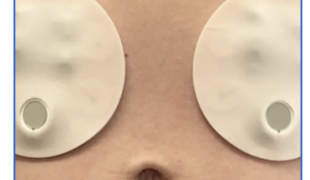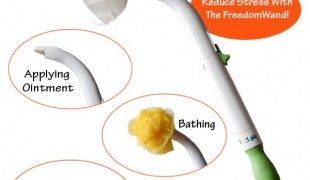- 6862
- 471
- 6
- 5
- 0
- Help Ukraine
About the solution
George has with experience in the welding trade, and has been working on various accessories designed to make his nephew's life easier.
This sink stand is mainly an adaptation of the height of the steps to the length of Yvan’s legs, and is safe to use and store.
You can check the instructions and materials below:
Manufacturing:
• The walking height was calculated according to the traditional formula (2 x walking height + walking depth) and this should give a dimension between 61 and 65 cm (for the height of an adult leg). In the case of the grandstand, it was calculated according to a child's leg, which gives an easy-to-use staircase with a minimum drop risk.
• Two wheels are placed at the front of the grandstand to allow for stability.
• Raw wood has only been sanded (once wet, natural wood is less slippery than wood varnished or painted).
• All edges have been rounded and all fixings are made by gluing and screws.
• The grandstand is placed against the sink, the steps being directed to the left or right of the sink.
Materials :
• Boards
• 2 wheels with a diameter of 40 mm
• Wood screws of 3.5 x 30 mm
• wood glue
Adapted from: http://bit.ly/2q30YfO
This solution shall not include mention to the use of drugs, chemicals or biologicals (including food); invasive devices; offensive, commercial or inherently dangerous content. This solution was not medically validated. Proceed with caution! If you have any doubts, please consult with a health professional.
DISCLAIMER: This story was written by someone who is not the author of the solution, therefore please be advised that, although it was written with the utmost respect for the innovation and the innovator, there can be some incorrect statements. If you find any errors please contact the patient Innovation team via info@patient-innovation.com
-
-
308
-
0
-
2927

Caregiver Steve Axelrod creates EKG for the gut - a patch-based system is designed to read signals from the digestive tract.
(SELF)-CARE: HYGIENE: Maintaining personal hygiene
(SELF)-CARE: USING THE TOILET: Using the toilet independently
(SELF)-CONTROL: BOWEL CONTINENCE: Maintaining bowel continence
CAREGIVING
Chron's Disease
Inflammatory Bowel Disease
Assistive Daily Life Device (to help ADL)
Change in bowel habits
Bloating
Constipation or diarrhea
Promoting self-management
Enhancing digestive function
Preserving Organ Function
Restoring Skin Health
Alleviating Allergies
To improve Treatment/Therapy
Preventing (Vaccination, Protection, Falls, Research/Mapping)
Raise awareness
Caregiving Support
Gastroenterology
General and Family Medicine
General Surgery
Pediatrics
United States
-
-
-
576
-
0
-
8089

FreedomWand Personal Hygiene & Toilet Aid
(SELF)-CARE: HYGIENE: Maintaining personal hygiene
(SELF)-CARE: USING THE TOILET: Using the toilet independently
Bone Disorders (Decalcification, Bone Deformity, Bone Fracture, Bone Infection)
Neuromuscular Disorders
Spinal Cord and Nerve Root Disorders
Cervical spinal cord injury/Tetraplegia
Assistive Daily Life Device (to help ADL)
Difficulty walking or moving
Muscle weakness
Difficulty coordinating movements
Stiffness or rigidity (difficulty moving)
Paralysis of the legs and lower body
Limited range of motion
Muscle pain or stiffness
Difficulty bearing weight
Difficulty standing from a seated position
Back pain
Promoting self-management
Caregiving Support
General and Family Medicine
General Surgery
Neurology
Orthopedics
Rheumatology
United States
-
-
-
409
-
0
-
6638

The Haberman Feeder- a mum's invention
VENTILATION
(SELF)-CARE: DRINKING: Drinking independently.
CAREGIVING
SWALLOWING: Swalling food and liquids
Down Syndrome (Trisomy 21)
Assistive Daily Life Device (to help ADL)
Promoting self-management
Enhancing digestive function
Support on Puerperium/Post-childbirth
Caregiving Support
Gastroenterology
General and Family Medicine
Medical Genetics
Pediatrics
Physical Medicine and Rehabilitation
United Kingdom
-
 en
en